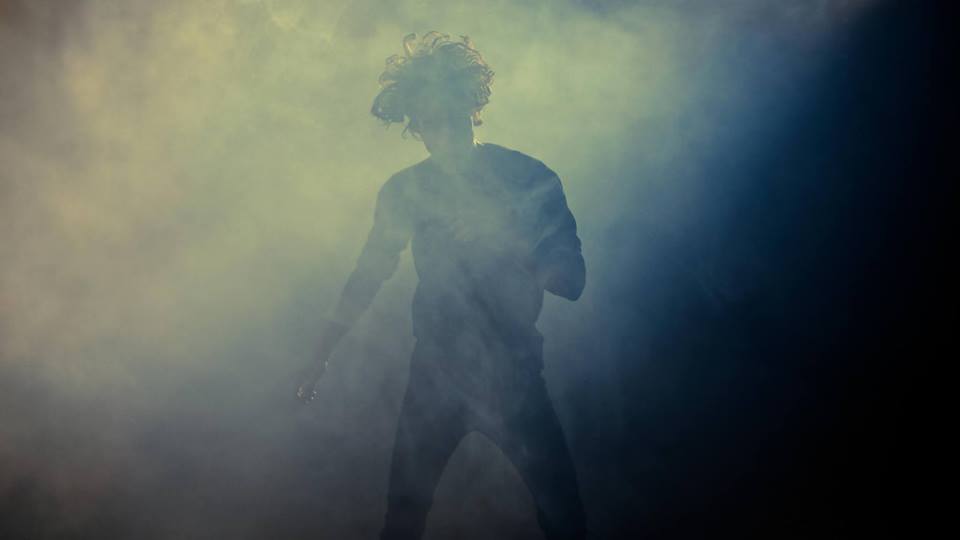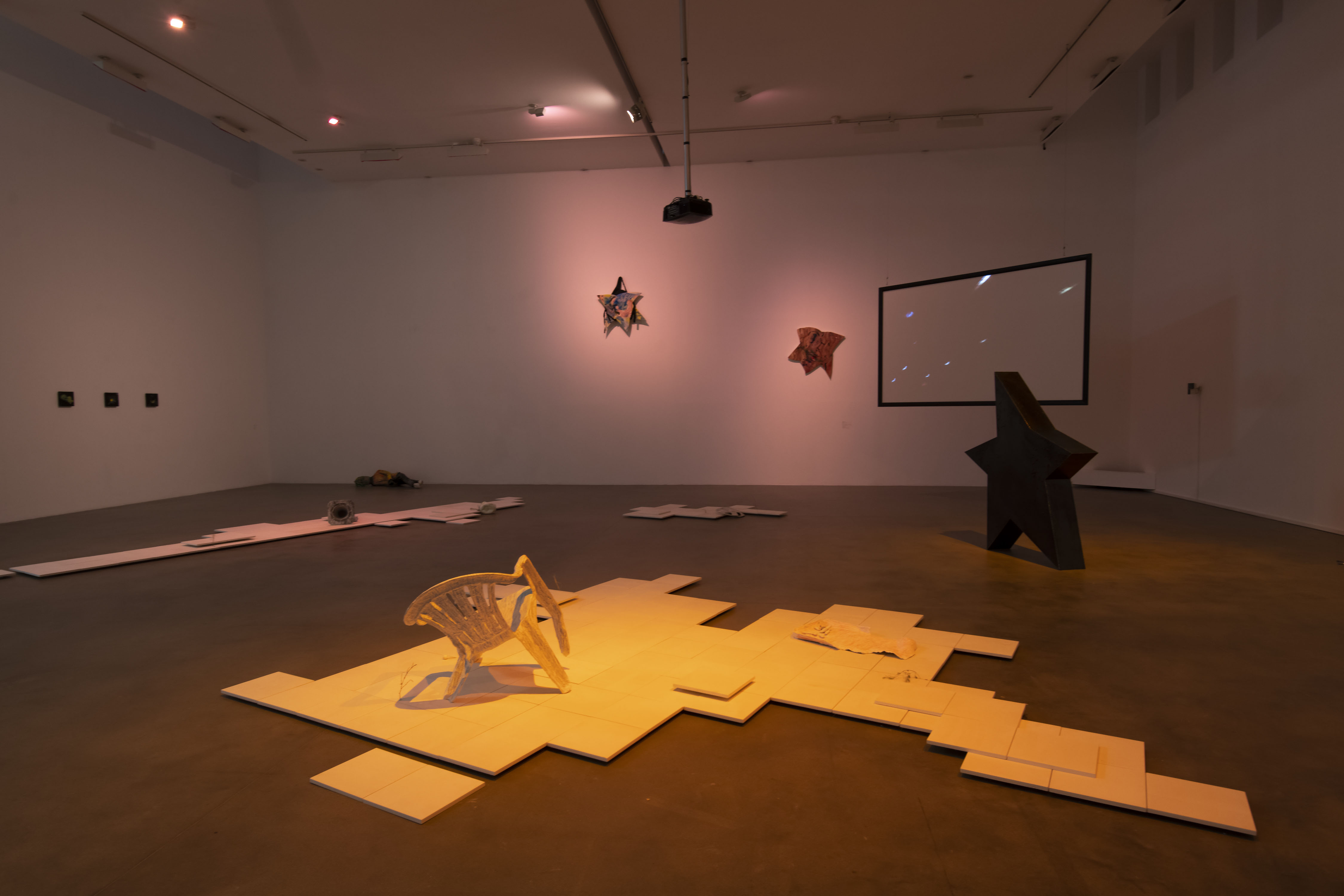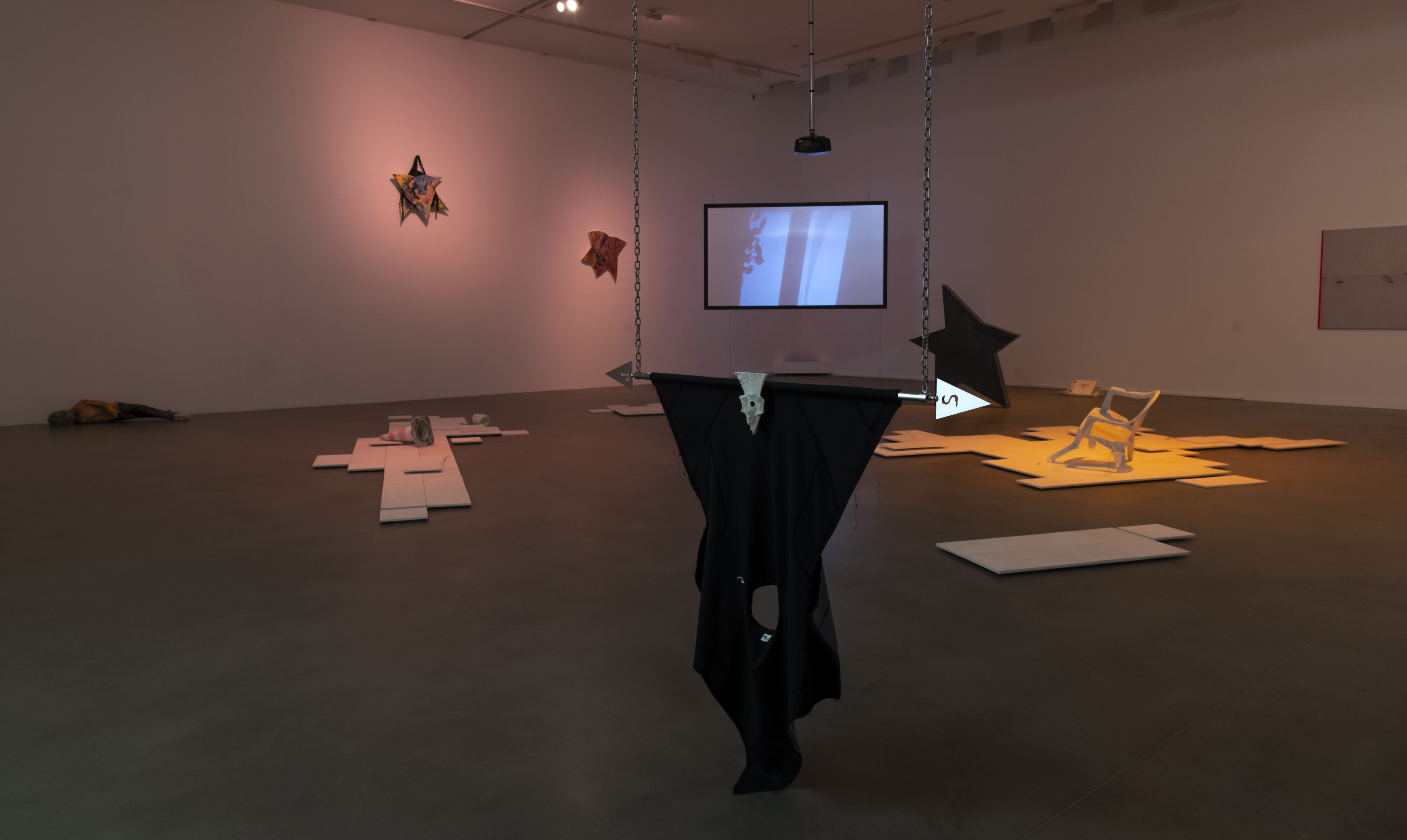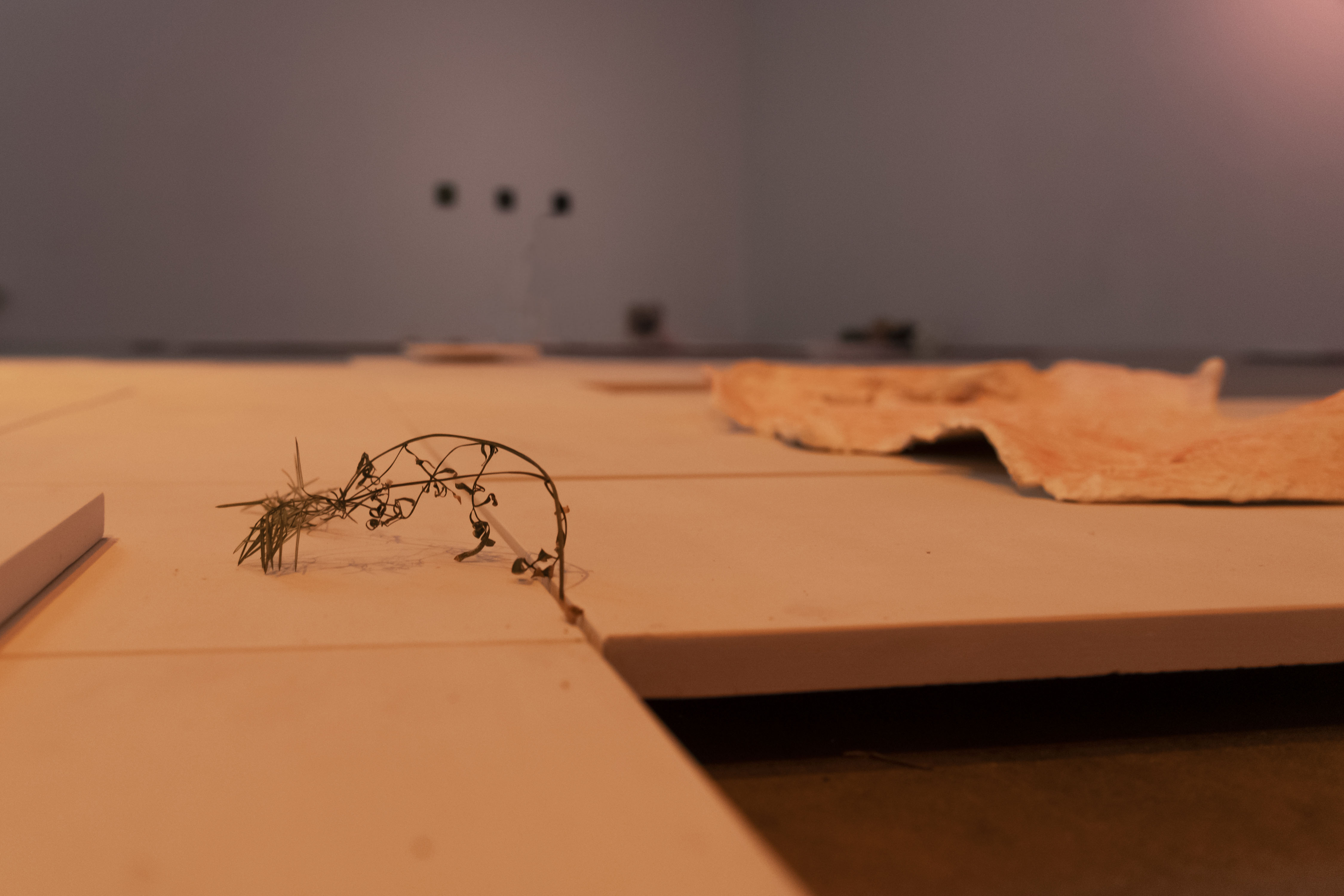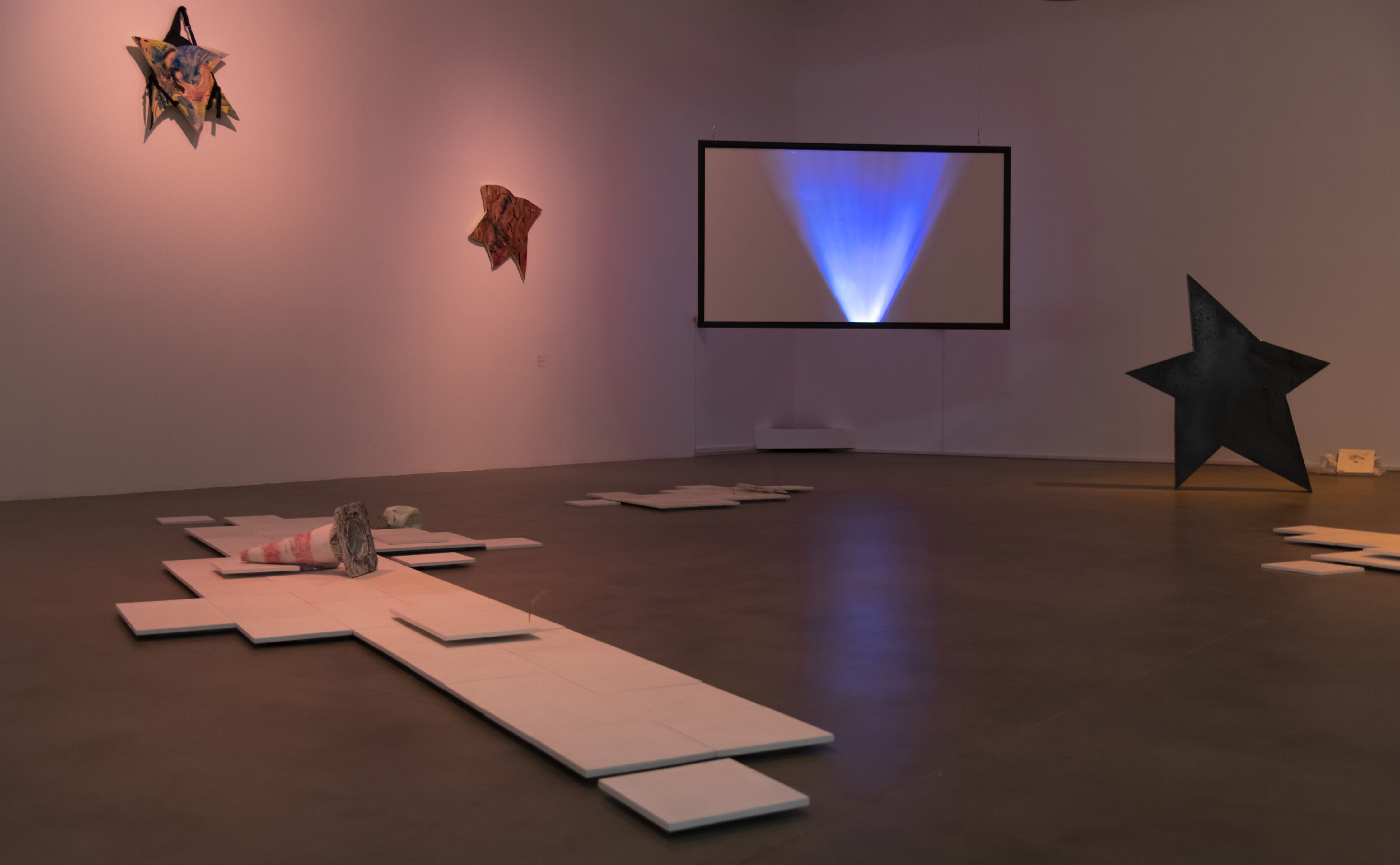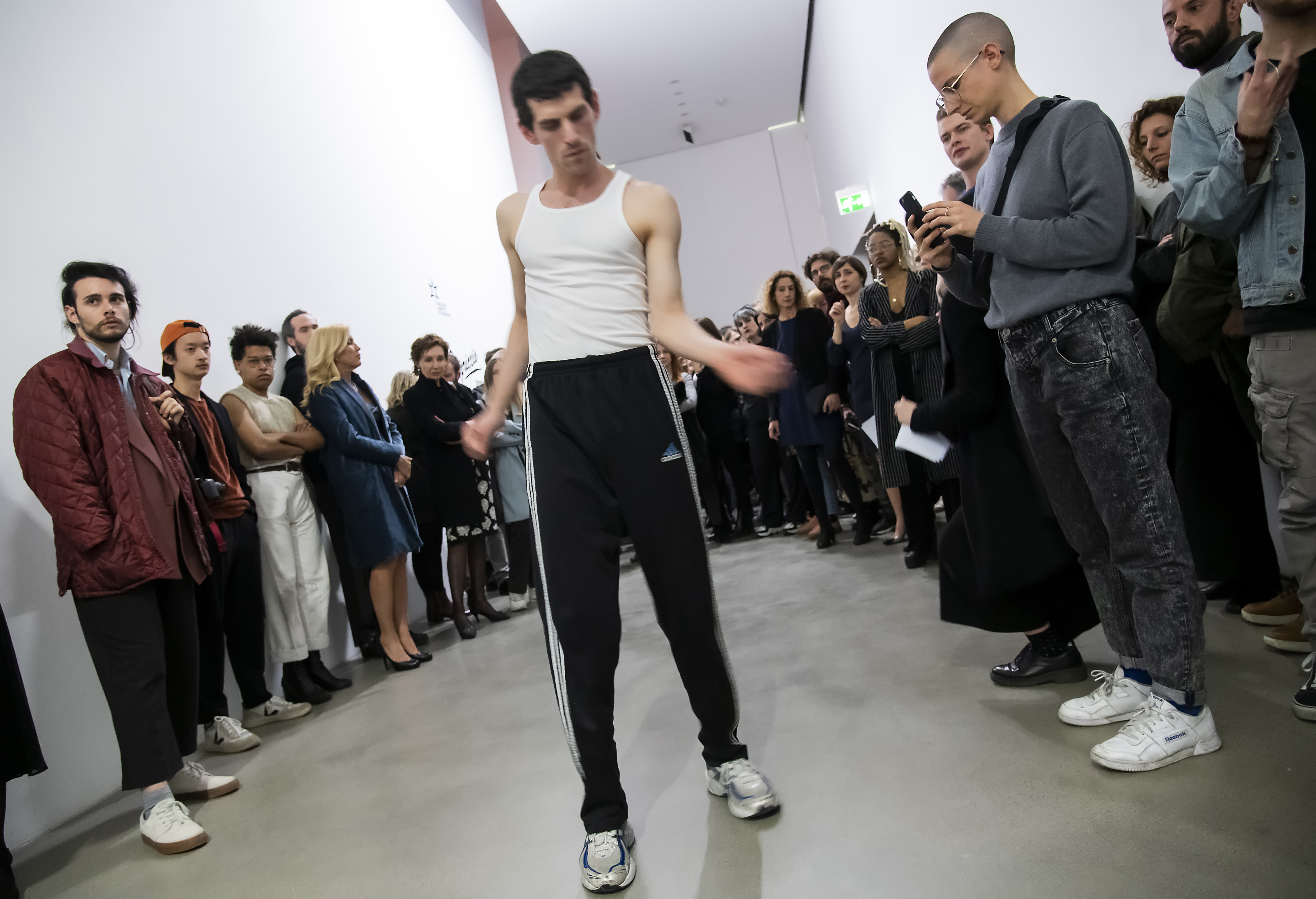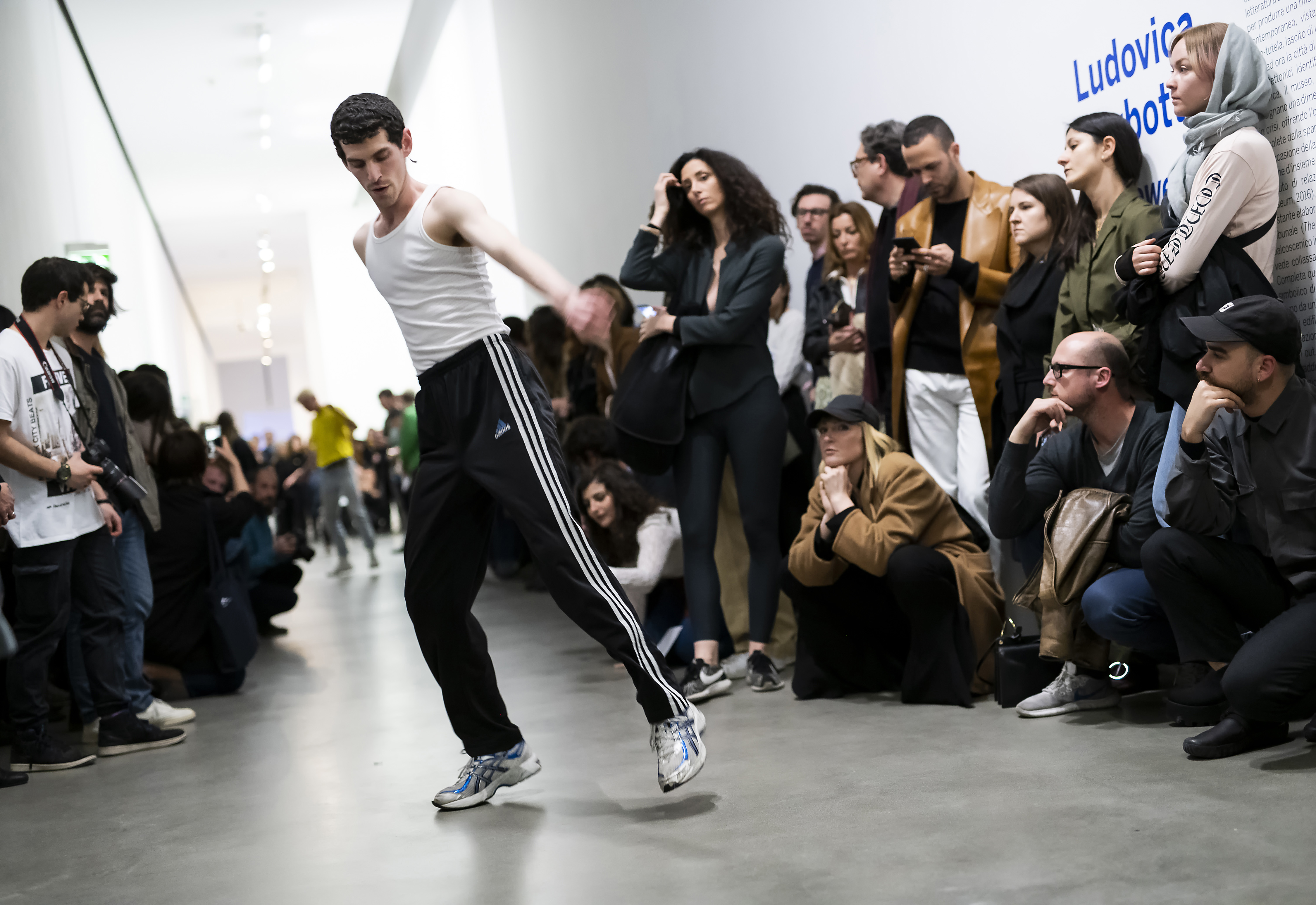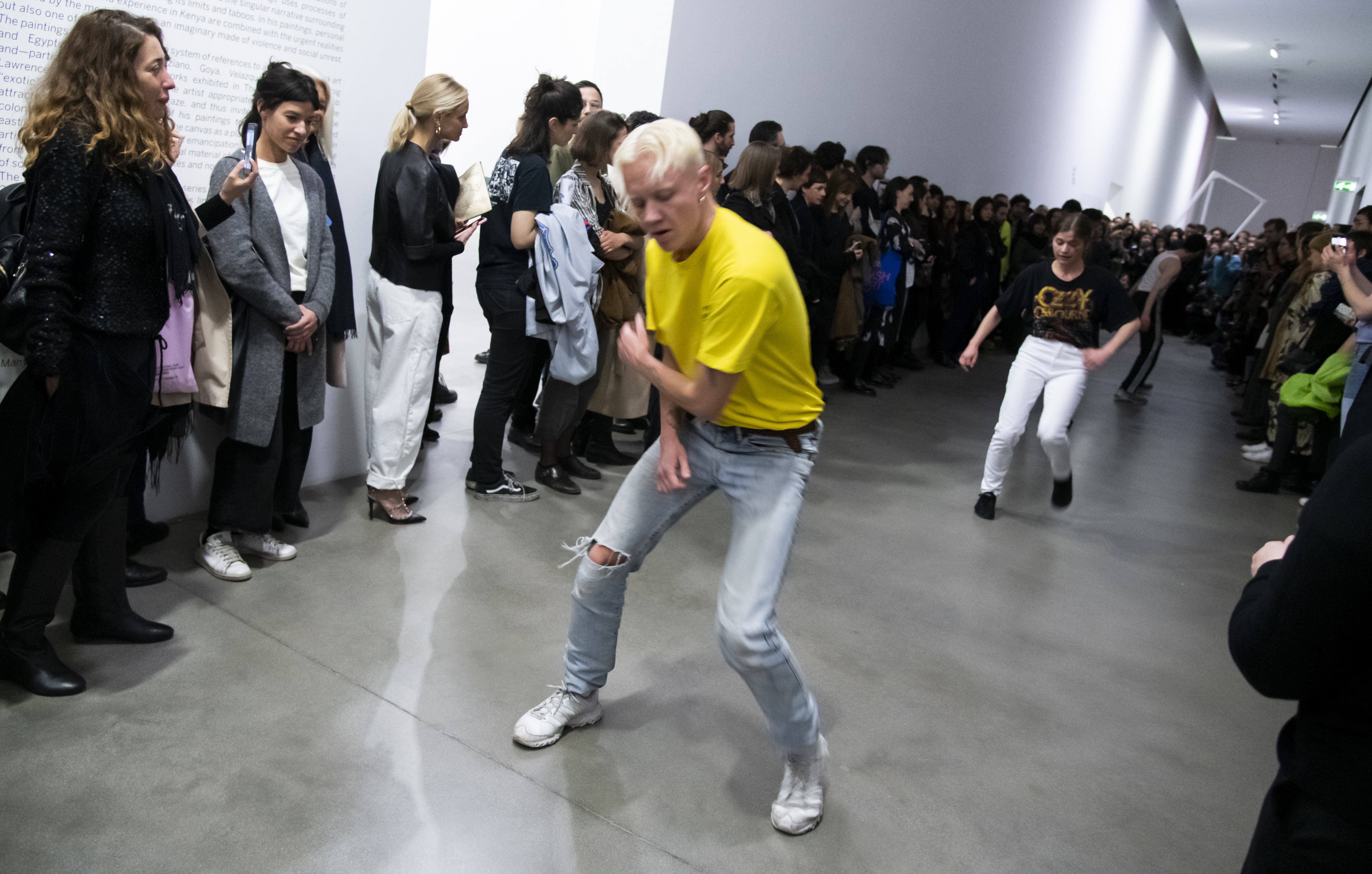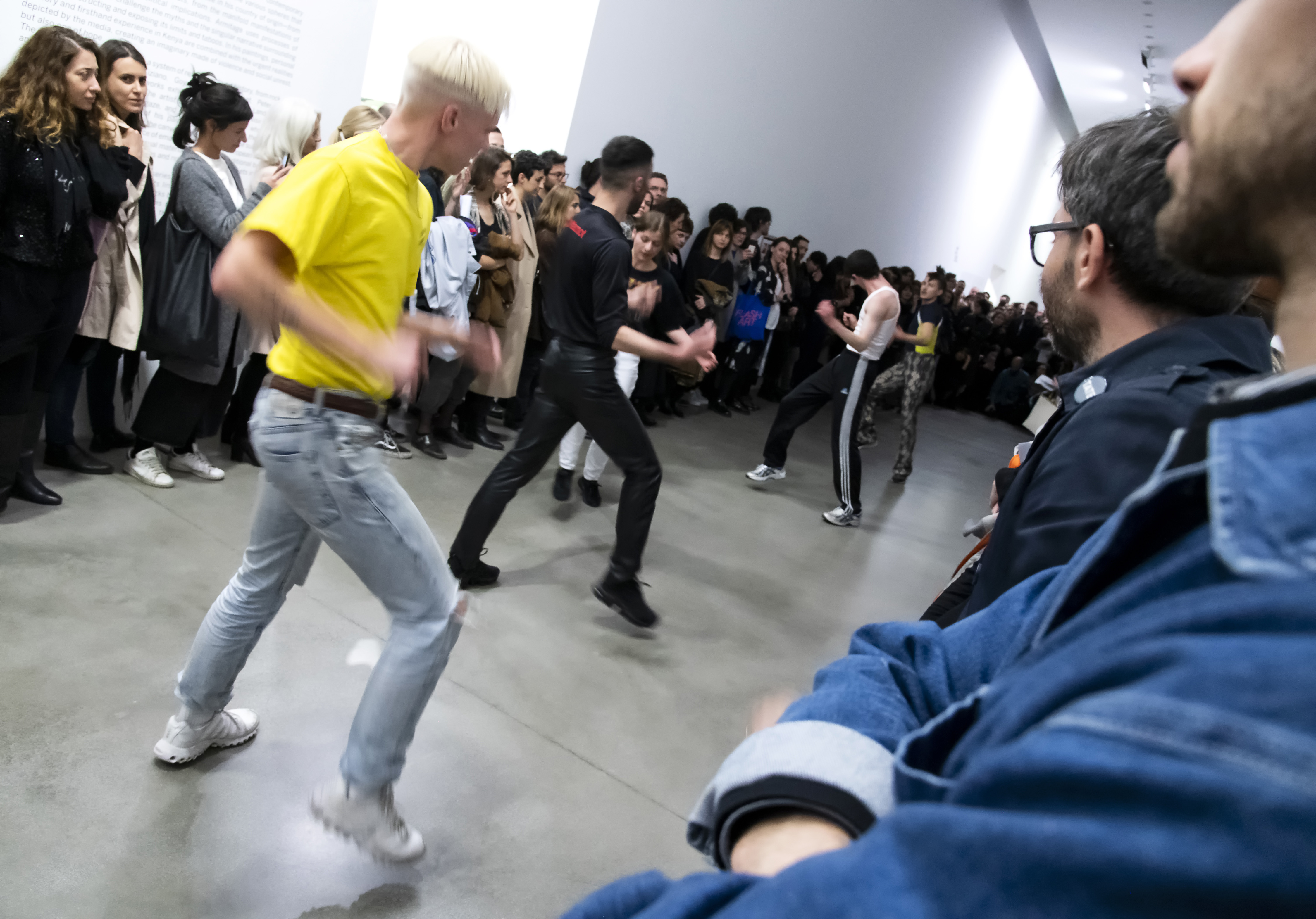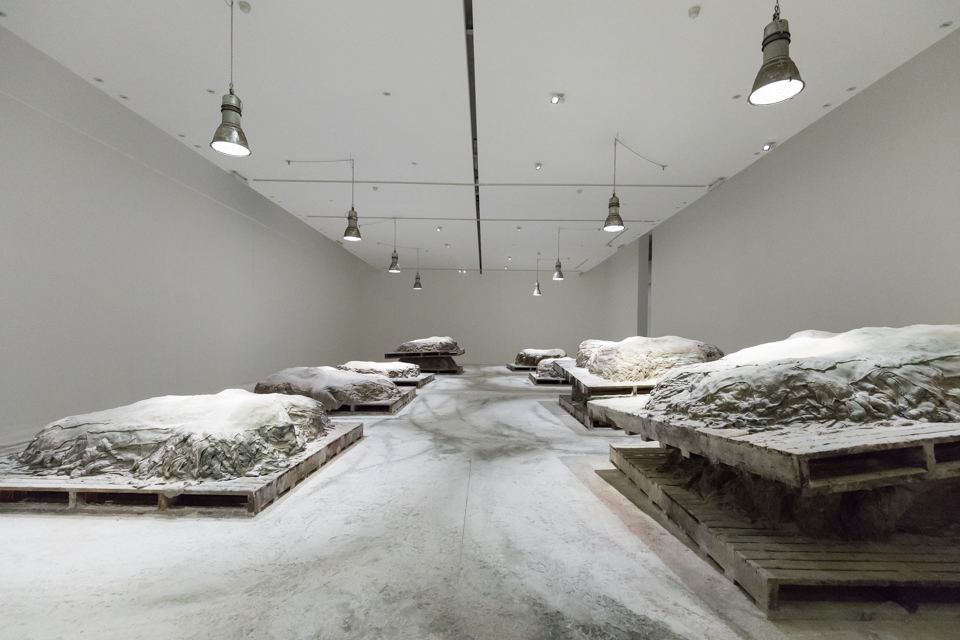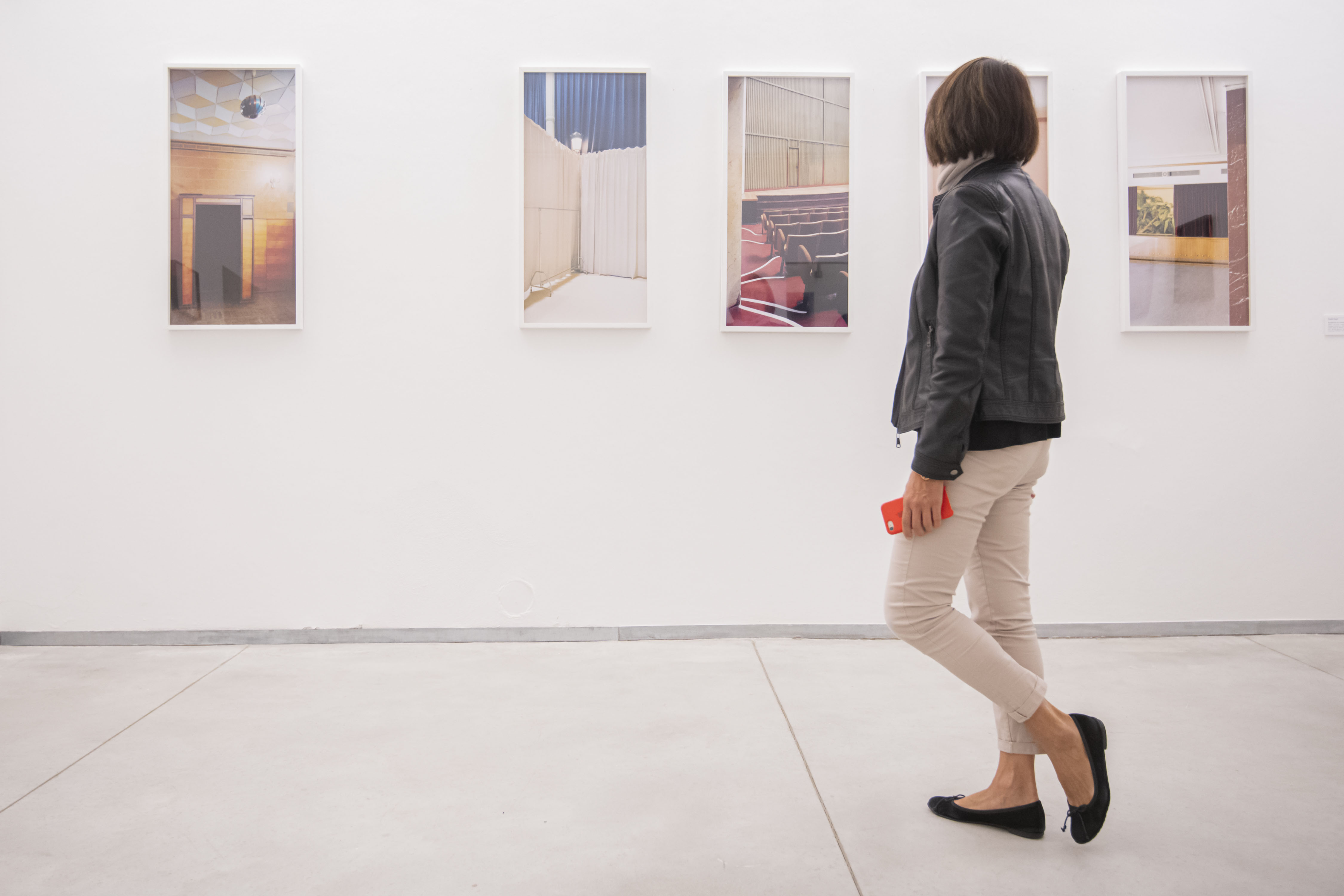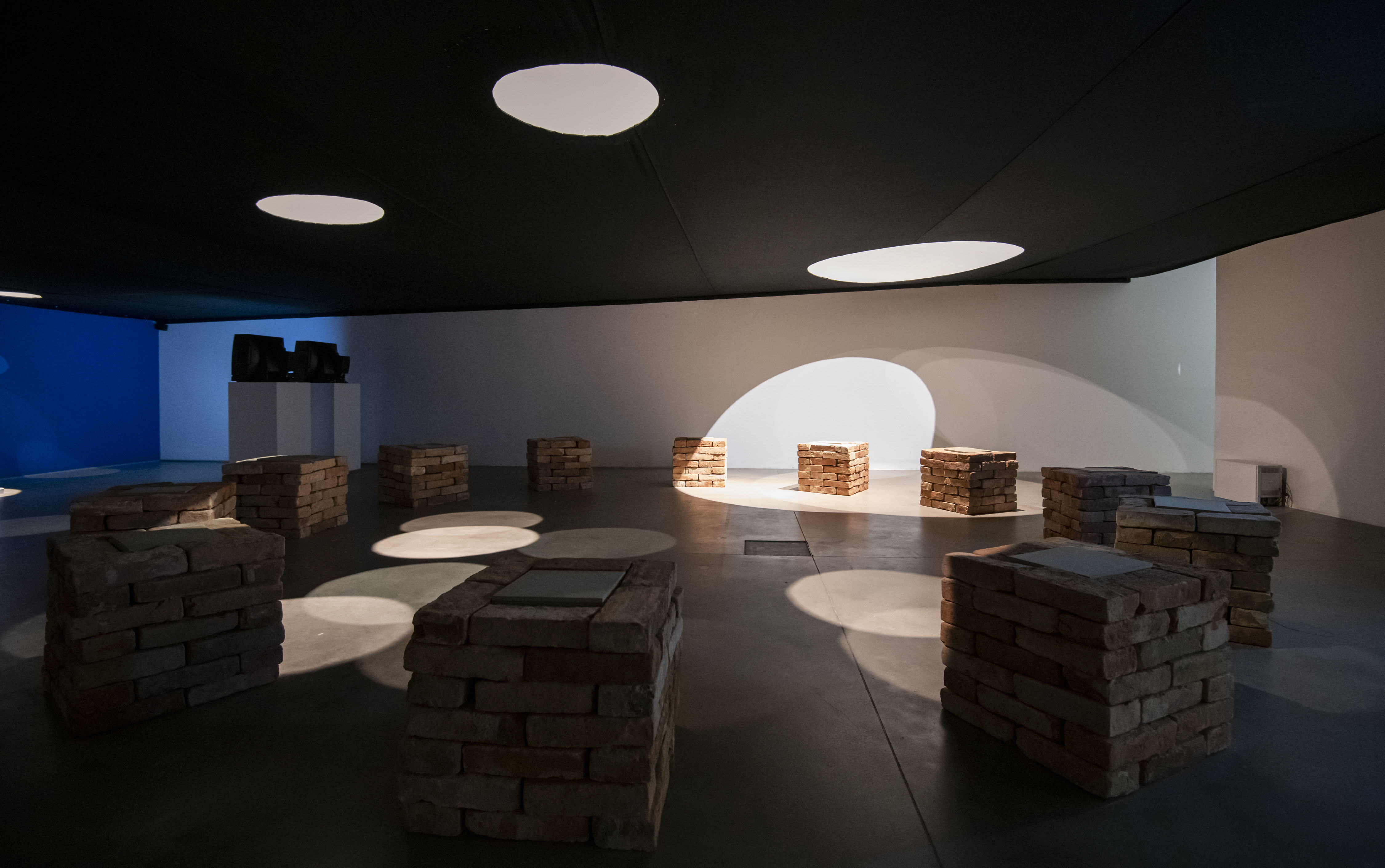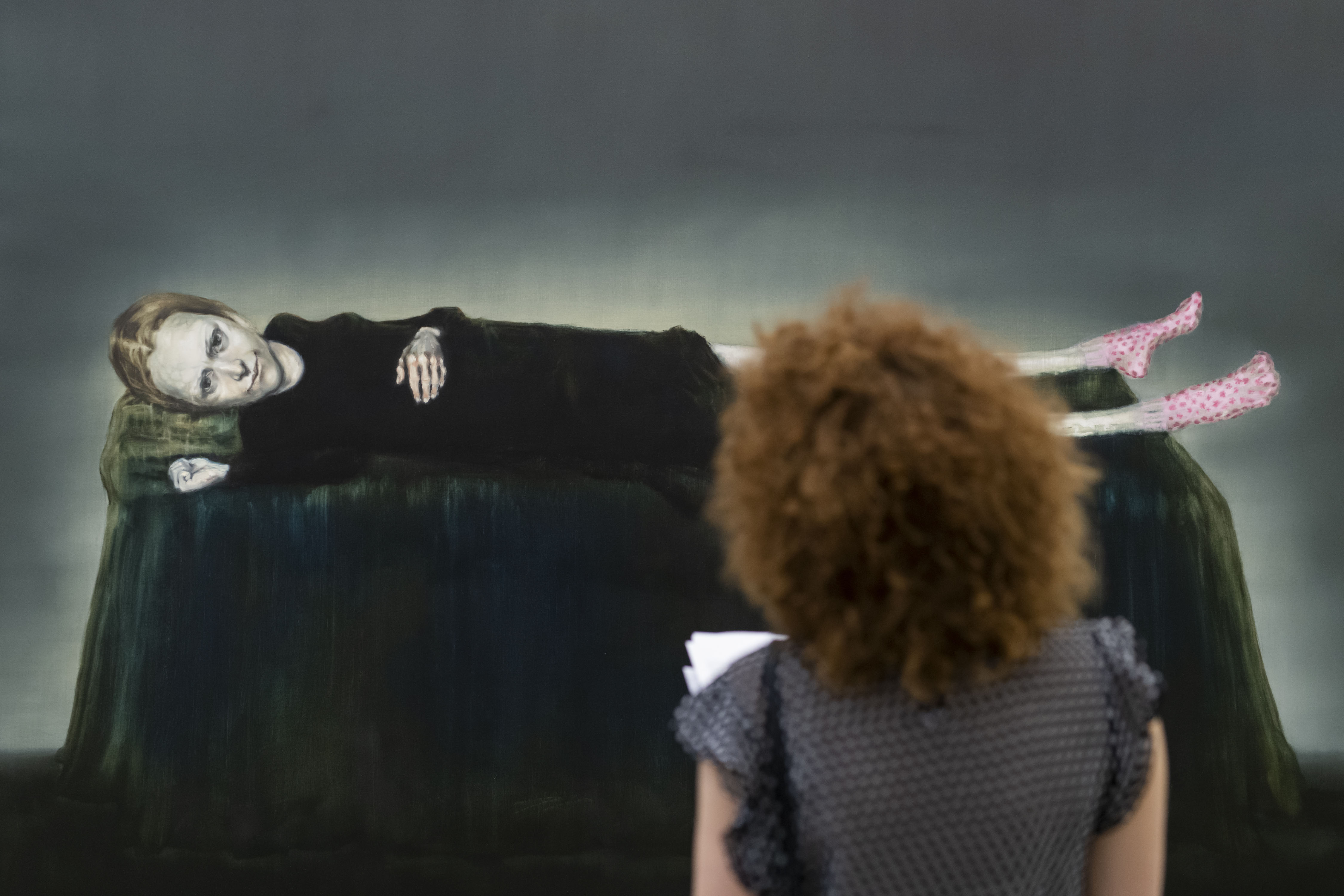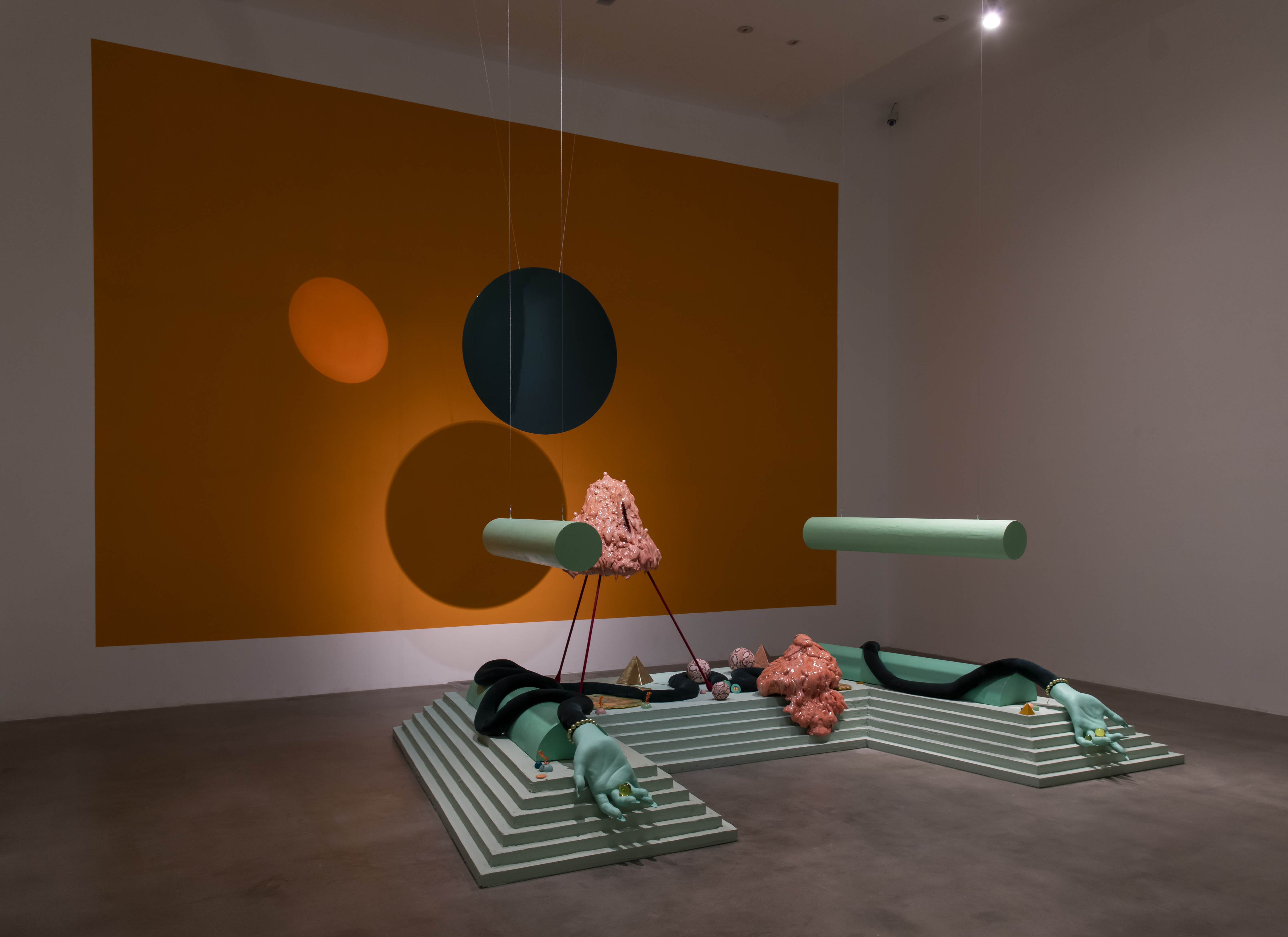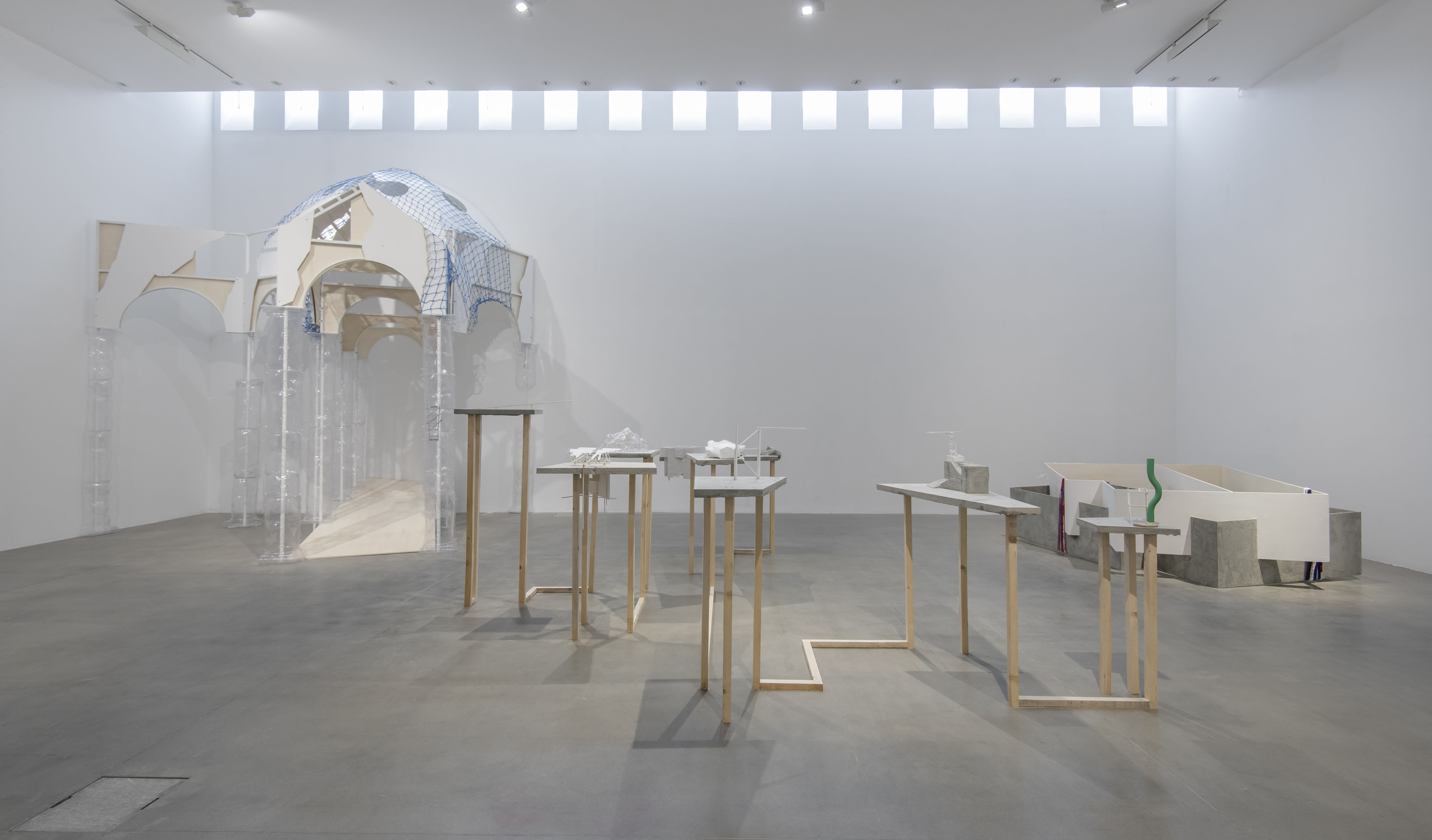Artists: Dafne Boggeri, Caterina De Nicola, Andrea De Stefani, Lorenza Longhi, Andrea Magnani, Michele Rizzo, Giuliana Rosso
Fondazione Sandretto Re Rebaudengo presents the exhibition Capriccio 2000. Running from April 15 to September 29, 2019, the exhibition is the final result of the 13th edition of the Young Curators Residency Programme. The three curators selected for this edition are Rosa Tyhurst, Jeppe Ugelvig, Hannah Zafiropoulos.
In music, a capriccio is a composition that takes a free-form approach to tempo and style. In painting, it refers to an architectural fantasy in which buildings and archeological ruins from different geographies and temporalities are placed together to form plausible, yet fictional landscapes. Gesturing to these connotations, the exhibition Capriccio 2000 traverses electronic dance music cultures in millennial Italy – particularly hardcore – to propose a sensory tableau: of listless bodies, ritualised gestures and neon hues amidst the detritus of suburban life.
While several earlier instances of nightclub and rave culture have been canonized as spaces of resistance, hardcore, arriving in the 1990s, had a much more diffuse and nihilistic aesthetic. Directly interacting with mass cultural consumption from its onset, hardcore developed into a popular musical language in the early 2000s, proliferating within local youth scenes across Europe. Considered low-brow and folkloric by most, hardcore speaks to a unique cultural moment that arose from often overlooked geographies across Europe.
Focusing on peripheral areas – from Turin in the north along the highway through Bergamo and Brescia to the suburban districts of Rome – the exhibition engages with youth culture as it emerged within the post-industrial landscapes of Italy. Such non-centralised spaces came to form the dominant culture of the time, influenced by styles seeping down from other cities in northern Europe whilst simultaneously developing their own distinct and idiosyncratic local languages.
Within the exhibition, the notion of capriccio is adopted as a creative method of assemblage, in which elements are selected for their aesthetic and impressionistic sensibilities as opposed to notions of representational truth. Taken from the title of an installation by one of the exhibiting artists, Andrea De Stefani, Capriccio 2000 encompasses a range of approaches, from the direct engagement with histories of electronic dance music in the work of Michele Rizzo to a more abstract evocation of landscape in Dafne Boggeri’s hypnotic video work LIANE and the intimate paintings of listless youths by Giuliana Rosso.
Through the visual vocabulary of a generation of artists working today, the exhibition explores how cultural motifs and symbols empty and drift across space and time, reverberating through colour, rhythm and materiality. Conceived as an immersive whole, it foregrounds sensory experience to embody the particular mood or spirit of the time.
The exhibition also marks the launch of an accompanying publication, envisioned as a reader that brings together rarely-seen texts on the histories of electronic dance music cultures in Italy and beyond. Designed by Studio Temp, it includes contributions from Federico Chiari, Riccardo Balli, Valerio Mattioli and Alberto Guerrini (Gabber Eleganza), alongside all of the artists included in the exhibition.
Young Curators Residency Programme is curated by Lucrezia Calabrò Visconti
